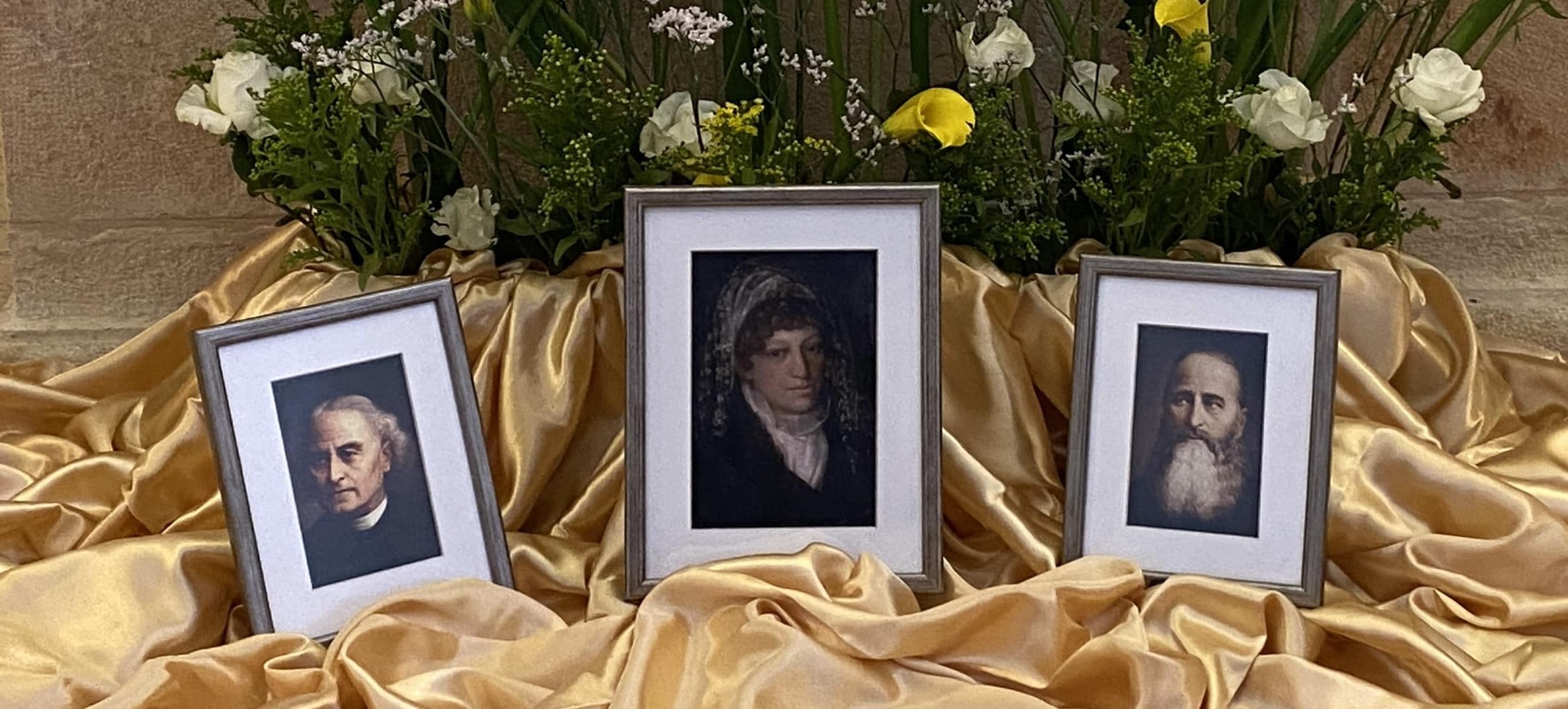

The character specific to Notre Dame de Sion was shaped largely in two eras: first during the early years of foundation and international growth in the mid to late 19th century; and later, in the aftermath of World War II, when we renewed our identity.
In both cases, the social and geo-political context and the prevailing theology of the time influenced our development.
Strong, caring women also played their part: women empowered by a keen sense of what it means to listen to the world, reflect, and respond actively to change, without losing sight of their origins.

Théodore Ratisbonne was born in 1802 in Strasbourg, France, to a Jewish family. He came to Christianity via a deep personal search. In early adulthood, he studied the Bible under the guidance of a wise and cultured woman, Louise Humann. Through these studies, he saw the thread linking the New Testament with the Hebrew Scriptures and came to believe that Jesus is the personification of God who is love. Théodore was baptised by Louise and three years later he became a priest.
During his ministry as a priest in the 1840s, he witnessed the plight of many Jewish children in Paris. The city’s population had swelled to such a degree that many Jewish migrants were unable to find work and provide for their children. Théodore was deeply troubled by this. He asked God for guidance.
When the Virgin Mary appeared unexpectedly and miraculously to his younger brother, Alphonse, on 20 January 1842, Théodore interpreted it as a sign to dedicate himself more intentionally to God by helping orphans and children living in poverty.
A second sign came shortly after. Théodore received a letter about a Jewish woman who had recently immigrated from Hungary with her two young daughters. The woman was dying. She asked Théodore to look after her children and raise them as Catholics; Théodore accepted. The news circulated, and more requests came from other families.
Théodore went about organising care for the children in Paris. At that time, he was relatively new to religious life and it wasn’t among his plans to establish a congregation. It was the women helping him bring up the children who encouraged him to do so. Two of those women went on to become our first Superior Generals, leading the Congregation for twenty-five years.
It became one of Théodore’s missions to serve God by helping disadvantaged people all over the world to have a dignified life. He saw education as a key to achieving this.
By 1884, the year when both Théodore and Alphonse died, the Congregation had grown to count 680 sisters and novices. Most sisters taught in the 29 schools the Ratisbonne brothers had opened in Muslim, Orthodox and Christian countries in Europe, Western Asia, Northern Africa and Central America.
In accordance with the theology of his time, Théodore believed one of the ways to express love of the Jewish people was to pray that they would embrace Christianity. Nonetheless, he held deep respect for the individual conscience and was aware that any religious call needed to come from within, as his own had. He forbade any form of proselytism and taught respect for all faiths. His advice to the sisters was: “You must have hearts larger than the world”.
Later, after the genocide perpetrated by the Nazis in the Shoah of World War II, the sisters began to question the moral sense of their praying for the conversion of people who had been exterminated for their very identity and faith. In Europe, many sisters had saved Jews from capture. But the realisation dawned that their knowledge of Judaism was, on the whole, based on theory, not experience. They came to see that the best way to love Jewish people must be by encountering them on their own terms, and working towards reconciliation and engagement between Christians and Jews, in mutual respect.
Equipped with these insights, during the Second Vatican Council in the 1960s, sisters of Our Lady of Sion worked behind the scenes on drafting and delivering the Church’s ground-breaking Nostra Aetate declaration that unveiled an expanded attitude of dialogue and respect towards Judaism and other non-Christian religions.

The formalisation of these revised Church guidelines, in turn, threw open doors to new ways for sisters to articulate our commitment to the Church, the Jewish people and a world of justice, peace and love. We intensified our study of the Scriptures, theology, Church history and Hebrew. We opened centres in many parts of the world, where Jews and Christians could meet and learn more about one another and our respective paths to God.
This dialogue not only enriched our own interpretation of Scripture and increased trust and friendship with Jewish people, it also heightened our understanding of the essence of Sion’s vocation: that every human being deserves respect and dignity, no matter what their background or beliefs are.
Today, openness to dialogue and change is impressed in the heart of each one of us. We want to know and understand those around us. And we seek to evolve with the world, while remaining faithful to our congregation’s original vision of love.
Full history timeline